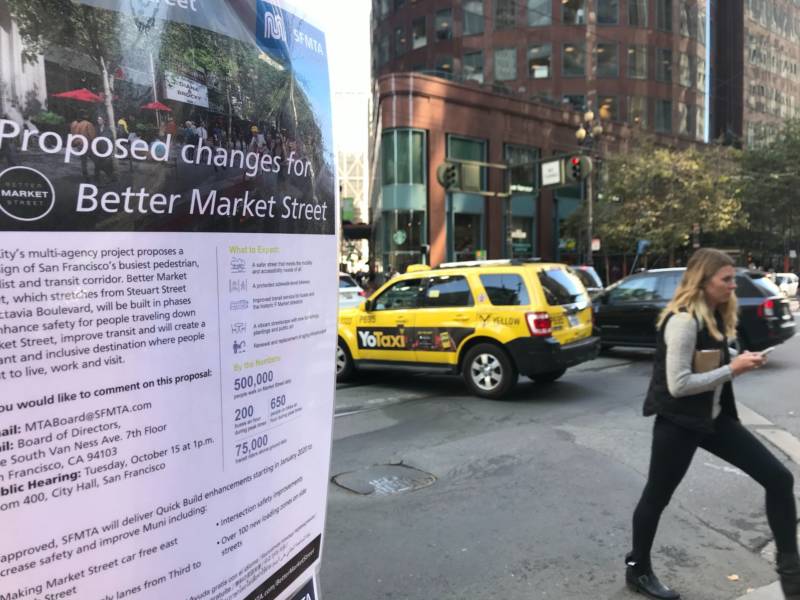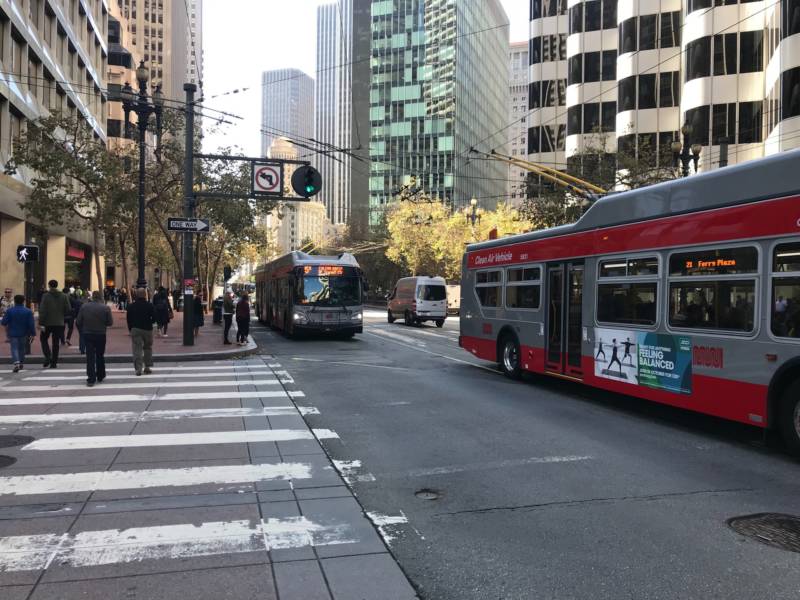Transportation officials voted Tuesday to ban private cars from Market Street east from 10th Street to Steuart Street, a move that the project's leaders said will make the key downtown thoroughfare safer for pedestrians and cyclists while improving transit service.
The San Francisco Municipal Transportation Agency (SFMTA) board of directors voted unanimously to approve the "Better Market Street" project — a 2.2-mile zone free of personal vehicles that will be rolled out in five phases at a total of $604 million, with construction beginning in early 2020. The zone will allow taxis, emergency vehicles, buses, trams and bicycles, but not personal cars, including ride-hail vehicles like Uber and Lyft.
"This will not only be a magnificent Market Street, it will be a model Market Street," said Malcolm Heinicke, SFMTA board chair. "Let’s start building future ones.”

Viktoriya Wise, SFMTA's acting director of sustainable streets, called the project “a once in a generation transformation of Market Street” — the city’s busiest bicycle, pedestrian and transit corridor.
The Better Market Street team includes several city agencies, including Public Works, SFMTA and the Planning Department.
Many people — cyclists, pedestrians, business leaders, climate change activists and environmentalists — spoke in support of the car-free zone at the SFMTA board meeting on Tuesday.
"Taking cars off Market is clearly going to save lives," said Darren Newell, campaign coordinator at the San Francisco Bicycle Coalition.
"We think it should be returned to an incredible avenue for the city," said Kevin Carroll, president and CEO of the Hotel Council of San Francisco.
But Peter Straus, a member of the San Francisco Transit Riders executive board, said they had a number of concerns primarily related to stops — such as ensuring full accessibility.

Every day, 500,000 people walk on Market Street and 75,000 ride on above-ground transit. Some 200 buses an hour shuttle people to the area during peak times, according to Better Market Street.
SFMTA officials cited aging infrastructure and safety challenges as some of the reasons that they’re making the changes, noting 75% of the injury collisions in the area include walking or biking.
San Francisco joins a number of cities — New York, Paris and Oslo in Norway — that have banned cars from parts of their metropolitan areas.
Other changes to the car-free zone include creating enhanced buffer zones between cyclists and pedestrians, restricting peak-hour loading on Market Street and adding bicycle intersection improvements and safety zones at eight intersections.
The city's public works director approved the proposal earlier Tuesday, said Better Market Street project manager Cristina Olea.
While the SFMTA board vote is the final approval, there is a 30-day appeal period following the city planning commission's unanimous vote on Oct. 10 to certify the environmental impact report.
Work on the project began about 2011.

